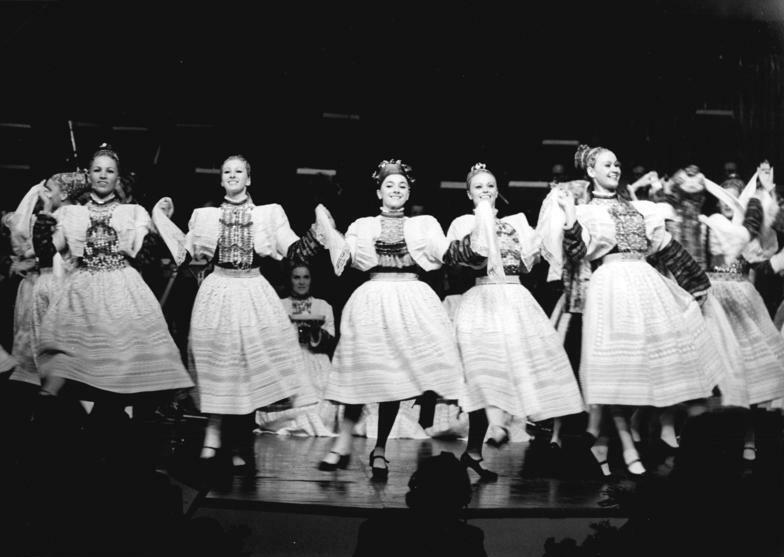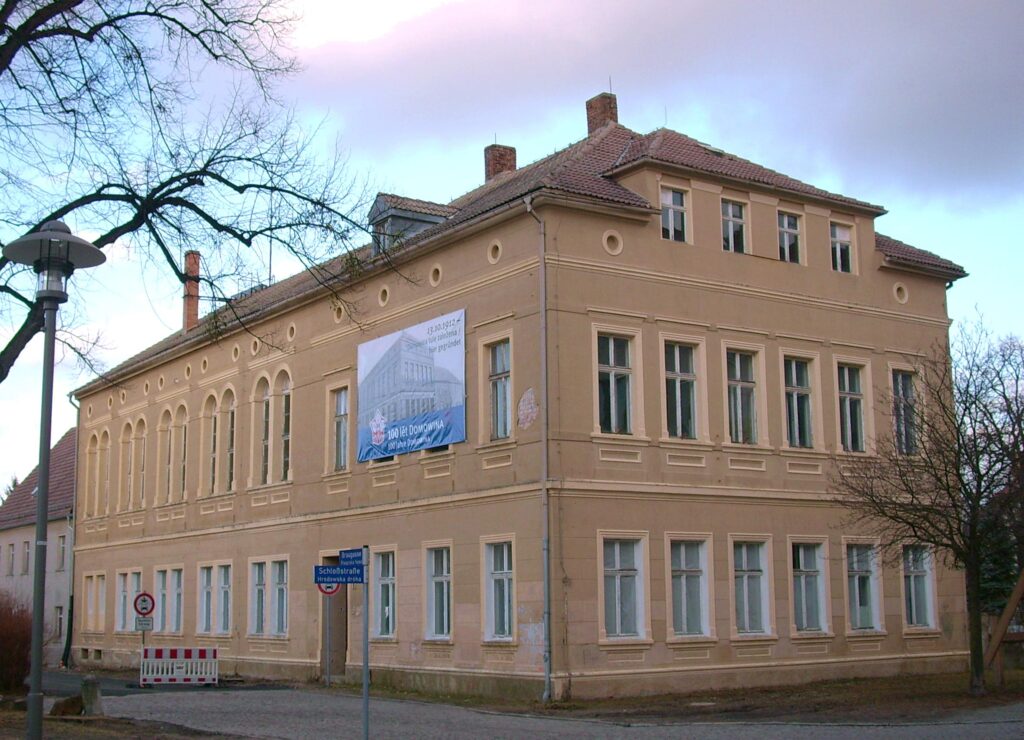In the heart of the Germany’s Lausitz region, Bautzen is not just another picturesque town. It is the cultural and political center of the Sorbian national minority, a community whose roots trace back over a millennium. Despite their small numbers, the Sorbs have managed to preserve a rich and distinctive cultural heritage. Renowned figures like the influential poet and writer Handrij Zejler, who played a pivotal role in the Sorbian cultural revival in the 19th century, exemplify the Sorbs’ significant contributions to the European cultural heritage. This article explores the unique aspects of Sorbian culture, their official status in Germany, the challenges posed by globalization, and the various efforts undertaken to protect and revitalize their language and traditions.
A Unique Culture, Shaped by Language

One of the most remarkable elements of the Sorbian culture is its language. Sorbian belongs to the West Slavic branch of the Slavic languages and is closely related to Polish, Czech, and Slovak. However, what truly sets it apart is the inclusion of the dual number, a grammatical feature that is an absolute rarity in European languages. The dual number provides specific forms for exactly two objects, distinct from singular (one) and plural (more than two) forms. This linguistic trait not only enriches the Sorbian language but also influences cognitive processes and cultural expressions. For example, in Sorbian, the word for fish changes depending on the number: “ryba” means one fish, “rybje” means two fish, and “ryby” refers to more than two fish. This feature is not just a grammatical curiosity but a window into a unique way of perceiving and interacting with the world. The presence of the dual number affects how Sorbs think about relationships, quantities, and social interactions, reflecting a cultural nuance that is deeply embedded in their language, as explained by the renowned poet Boris A. Novak, “The relational dual structure is absent in most other languages. The dual form plays a unique role in love poetry. The dual is the language of love, an island of intimacy in between the desert of solitude, represented by the singular, and the voice of the masses, represented by the plural.” Language, in this case, is not merely a communication tool but a vital component of cultural identity. The dual number, along with other linguistic features, shapes how Sorbs describe their environment, interact with one another, and maintain their cultural heritage. It is a testament to the richness of their linguistic tradition and a crucial aspect of what makes Sorbian culture distinct.
Recognized Minority with Equal Rights
In Germany, the Sorbs enjoy the status of an officially recognized national minority. This recognition comes with equal rights, ensuring that their language and culture are preserved and promoted. In the Lausitz region, where the majority of Sorbs reside, Sorbian is afforded the same status as German. This bilingual status means that public signs, education, and administration are conducted in both languages, reflecting the importance of Sorbian in public life.

One of the key organizations advocating for Sorbian rights and interests is Domowina, the Sorbian umbrella organization. Founded in 1912, Domowina has played a pivotal role in supporting and promoting Sorbian political and cultural interests. It serves as a representative body for Sorbs, engaging with local, regional, and national authorities to ensure that Sorbian rights are upheld and their cultural heritage is preserved. Domowina’s efforts extend to various aspects of Sorbian life. It organizes cultural events, supports Sorbian-language media, and promotes educational initiatives that encourage the use of Sorbian among young people. Through its activities, Domowina helps to foster a sense of community and identity among Sorbs, ensuring that their unique culture continues to thrive in a predominantly German-speaking environment.
The Impact of Globalization on Sorbian Identity
Despite the official recognition and support, the Sorbian community faces significant challenges in the modern world. Globalization, with its emphasis on cultural homogenization and economic efficiency, has posed a threat to the survival of many minority languages and cultures, including Sorbian. The number of Sorbian speakers has dramatically declined over the past century, from 143,700 in 1945 to approximately 20,000 in 2007. This decline is particularly evident among the younger generation, who are less likely to speak Sorbian fluently or identify strongly with their heritage.

Several factors contribute to this decline. Firstly, the economic opportunities available in German-speaking regions often lure young Sorbs away from their traditional communities, leading to a loss of language and cultural ties. Secondly, the dominance of German in media, education, and public life makes it challenging for Sorbian to compete, particularly in a digital age where content is overwhelmingly produced in major languages. Thirdly, the availability of Sorbian language education has been limited, with few qualified teachers and resources dedicated to teaching the language. These factors have deep implications for the community. Language is a crucial carrier of cultural knowledge and traditions. As fewer people speak Sorbian, there is a risk that the cultural practices, folklore, and communal bonds that are transmitted through language may be lost. This erosion of language and culture poses an existential threat to the Sorbian identity, making it imperative to find effective strategies to reverse this trend.
Efforts to Protect and Revitalize Sorbian Language and Culture
Despite measures implemented to protect and revitalize Sorbian language and culture, these efforts are often insufficient to counter the pervasive impacts of globalization and societal neglect. The reality remains that not enough is being done to preserve the Sorbian language, leading to significant implications for the community. According to Domowina, a critical issue is the lack of awareness among Sorbs regarding their legal rights to use the Sorbian language. This lack of awareness means that many Sorbs do not exercise their rights to use Sorbian in public life, contributing to its decline. This creates an environment where Sorbian is marginalized, making it even harder for the language to survive and thrive.

The insufficient efforts to preserve the Sorbian language manifest in various ways. Educational initiatives, while important, are often underfunded and lack the necessary resources to be fully effective. Bilingual schools and language courses are limited in number, and there are few qualified teachers to provide comprehensive Sorbian language education. This shortage impacts the younger generation, who are less likely to learn and use Sorbian fluently, further diminishing the number of active speakers. The implications of this neglect are omnipresent. As the use of Sorbian declines, so too does the transmission of cultural knowledge and traditions that are integral to Sorbian identity. Language is a key vehicle for cultural expression; its loss can lead to the erosion of cultural practices, folklore, and communal bonds that have been maintained for centuries. This cultural erosion threatens the very existence of the Sorbian community, as language and culture are inextricably linked. The findings highlight a crucial gap that needs to be addressed. Awareness campaigns and educational programs are essential to inform Sorbs of their rights and encourage the use of Sorbian in all aspects of life. Government policies must not only provide legal protections but also actively promote the use of Sorbian through incentives and support for cultural and linguistic initiatives. Community engagement and participation are vital to create a supportive environment where Sorbian can flourish. In conclusion, while there are efforts to protect and revitalize Sorbian language and culture, they are often insufficient to address the challenges faced by the community. The lack of awareness and underutilization of legal rights significantly hinder the preservation of Sorbian. Without stronger and more effective measures, the Sorbian language and cultural heritage face an uncertain future. It is imperative to recognize and address these issues to ensure that the Sorbian community can continue to thrive and contribute to the cultural diversity